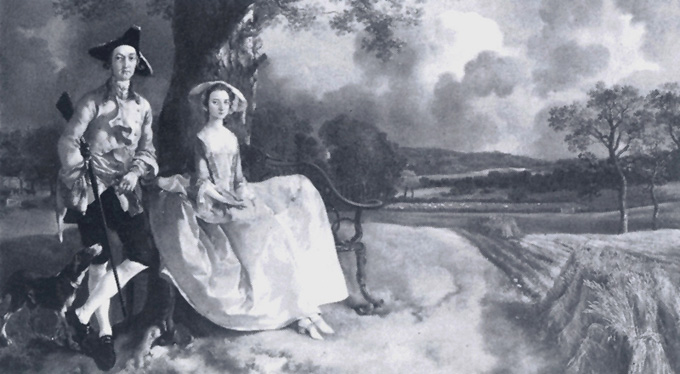
Gainsborough Mr and Mrs Andrews c. 1750
Gabo Naum (né Pevsner) (1890–1977). Painter of Russian origin trained as an engineer in Munich before turning to the creation of abstract constructions. The first of these was Bust (1915), a Cubist-influenced work executed in planes of wood. In 1917 he returned to Russia with his elder brother, the painter Pevsner, and settled in Moscow, becoming associated with the local avant-garde led by Malevich and Tatlin. In 1920 the Pevsners issued their ‘Realist Manifesto’, which declared against the functionalism of Tatlin and Rodchenko’s Constructivism; a year later they left Russia, finding the artistic climate unsympathetic, for Berlin. G. continued to develop his ideas in constructions made of glass, plastics and metals, after Berlin, in Paris, then Britain and, from 1939, in the U.S.A. Later works included an 80 ft (24.4 m.) sculpture for the Bykenkorf Building, Rotterdam (1957). Among his publs is Of Divers Arts (1962).
Gaddi. A family of Italian artists who sustained the style of Giotto for 2 generations in Florence. Taddeo G. (d. 1366) was probably an assistant to Giotto. His own best-known work is the fresco cycle Life of the Virgin. His sons, Agnolo and Giovanni, were working in the Vatican in 1369. Agnolo painted the fresco cycles The True Cross and Life of the Virgin as well as a number of panels, e.g. Coronation of the Virgin.
Gainsborough Thomas (1727–88). British painter of landscape and portraits. Born at Sudbury, Suffolk, G. was trained in London. His early style was formed by a study of the figures in Watteau and other French Rococo painters while working for the engraver Gravelot, combined with the influence of the Dutch masters of landscape, especially J. van Ruisdael and J. Wynants.
G. returned to Suffolk and painted some of his finest work (c. 1750–9), including the combination of a double portrait and a landscape, Mr and Mrs Andrews, and the large landscape Cornard Wood (or Gainsborough’s Forest). In 1759 G. was astute enough to move to Bath, where he soon came to the notice of the fashionable world. When his reputation spread to London he moved there in 1774. In a few years he disputed with Reynolds the enormous profit and prestige of being the leading portrait painter in Britain and even in Europe. Though a founder-member of the R.A., G. later withdrew and exhibited his paintings in his own home, Schomberg House, Pall Mall. His success continued to his death and his rival, Reynolds, did much to confirm his fame. In his later portraits G. borrowed from Van Dyck, e.g. The Blue Boy. He was most successful in painting women of obvious spirit and animation, e.g. Countess Howe, such sympathetic studies as the newly married couple in The Morning Walk, and the delightfully informal sketches of his 2 daughters.
G. preferred to paint idealized landscapes and what Reynolds called his ‘fancy pictures’. His strange lighting was his own, but Rubens was an influence on his later work. The feathery brush-work, lyrical style and rich sense of colour can be seen in many galleries. A masterpiece is The Harvest Wagon. Two Shepherd Boys with Dogs Fighting is a good example of the ‘fancy pictures’ and shows the late influence of Murillo. Many of G.’s oil sketches and drawings are of an unusually high quality: Housemaid, and Mrs Gainsborough Going to Church.
G. had a lasting influence on British painting, but his only direct follower was his nephew, Gainsborough Dupont (c. 1754–97), who worked in his studio, completed many of his late portraits and was a skilful imitator of his style.

Gainsborough Mr and Mrs Andrews c. 1750
Galgario Fra Vittore del (Giuseppe Ghislandi) (1655–1743). One of the most important Italian portrait painters of the late Baroque period. After studying in Venice under S. Bombelli he worked mainly in Bergamo. His paintings combine the richness of Venetian colouring with a directness derived from G. Moroni.
Gallego Fernando (fl. 1466–1507). Spanish painter who worked in and around Salamanca. His style, especially reminiscent of R. van der Weyden, and his use of oils, show him to have been under the Flemish influence strong in Spanish art at the time. There are altarpieces by G. in Zamora cathedral and the Prado.
Gallego Francisco (fl. late 15th c.). Spanish painter under Flemish influence, possibly father of Fernando G. The latter’s work and his own are not easily distinguishable.
Gandhara. N.W. region of the Kushan empire on the Upper Indus, Pakistan, noted for its Greco-Buddhist sculpture of the early cs AD. Greek influence came from neighbouring Bactria. Buddha is shown as a young Apollonian type with eastern features; he has a straight nose, fleshy face, lengthened ear lobes and evenly waved hair gathered in a top knot. The G. style spread E. to China (The Six Dynasties).
Garofalo, Il. Benvenuto Tisi (1481–1559). Ferrarese painter of religious and mythological subjects, the last representative of the school of Ferrara. In Ferrara he studied under B. Boccaccino and worked with Dossi Dosso; in Rome he met Raphael. The successive influence of these artists is apparent in his work, much of which is in Ferrara.
Gaudier-Brzeska Henri (1891–1915). Sculptor and draughtsman; born in France but associated with the English school. Although only 23 when killed in action, G.-B. had already achieved an astonishing maturity as an artist. From 1911 he lived in Britain, working by day as a clerk, encouraged by his companion Sophia Brzeska (whose name he adopted), and a few sympathetic patrons. In 1913 he identified himself briefly with the Vorticists. Such works as The Dancer, Horace Brodzsky and Birds Erect explore the potentialities of modern sculpture, representational, Cubist and abstract; while G.-B.’s drawings, especially the superb outline drawings of nudes, birds and animals, are now highly valued.
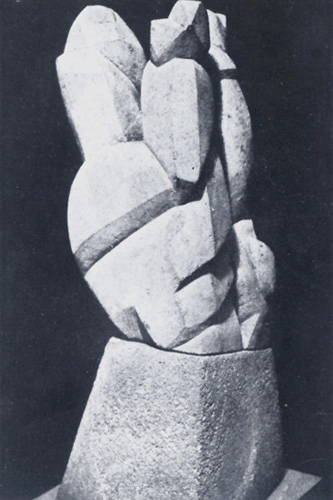
Gaudier-Brzeska Birds Erect 1914
Gauguin Paul (1848–1903). French painter, sculptor and graphic artist. With Van Gogh and Bernard, G. was the creator of a new conception of painting, and his work was a formative influence on 20th-c. art. Like Van Gogh’s, his life has become almost a modern legend. Born in Paris but brought up chiefly in Peru, he served 1st in the French merchant marine, then became a successful stockbroker in Paris, painting in his spare time. He exhibited with the Impressionists (1880–6), and the 1st evidence of great original talent was Study of the Nude (1880). In 1883 he gave up his job to paint full-time with disastrous financial consequences. After an attempt to support his family in Denmark, he left them, dividing his time between painting in Brittany and a number of jobs, such as bill-sticking in Paris and working as a navvy on the Panama Canal. At Pont-Aven, Brittany, in 1888 he met Bernard with whom he evolved a much-simplified, non-naturalistic style of painting with emphasis on decorative line and the use of flat bright colour. Based on many models (ills in children’s books and Japanese colour prints among them), the new style was called ‘Synthetism’. A masterpiece of the period is Jacob Wrestling with the Angel. Late in 1888 came the disastrous visit to Van Gogh at Arles. In 1889–90 he was painting at Pont-Aven and Le Pouldu, Brittany. In 1891 he left Europe for Tahiti. The remainder of his life was spent in the South Seas, except for an unsuccessful attempt to sell his paintings in France (1893–5). When G. died in poverty at Atuana, Marquesas Islands, he left behind not only many paintings, including The White Horse, Mango Blossoms, Where Do We Come From … and Nevermore, but also carvings, woodcuts, watercolours, lithographs and ceramics; while his writings, chiefly journals and letters, are also of interest. The most important of these are Noa-Noa and Avant et après.
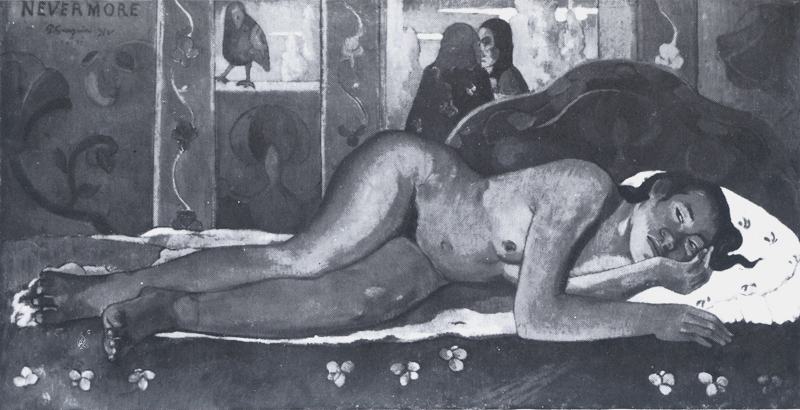
Gauguin Nevermore 1897
Gaulli Giovanni Battista. Baciccia
Gavarni Paul. Pseud. of Sulpice-Guillaume Chevalier (1804–66). One of the leading French graphic artists of the 19th c, satirist, ill., also wood engraver and lithographer. His contributions to Le Charivari and other papers illustrated the absurdity of the human comedy with elegance and good humour. His visits to London (1847, 1849–52) opened his eyes to vice and poverty, and an increasing bitterness and disillusionment appeared in his work. Masques et visages (1852), which includes the series Les Propos de Thomas Vireloque, is typical of this period. His own apt captions give additional point to his drawings.
Geddes Andrew (1783–1844). Scottish portrait painter and etcher, friend of Wilkie. His best-known painting, which shows the strong influence of Rembrandt on his work, is his portrait of his mother, of which he also made an etching.
G(h)eeraerts the Elder, Marcus (1510?–90?). Flemish painter of historical and religious subjects who came to Britain with his son in 1568.
G(h)eeraerts the Younger, Marcus (1561–1635). Flemish portrait painter who settled in Britain; son of the above. Paintings in a variety of styles are attributed to him; probably he collaborated with the other Flemish artists in Britain, J. de Critz and I. Oliver, in producing the costume portraits of the late Elizabethan and Jacobean periods.
Geertgen tot Sint Jans (c. 1465–c. 1495). Early Netherlandish painter. Born in Leyden and a pupil of Van Ouwater, G. is poorly documented. 2 works, Lamentation Over the Dead Christ and Julian the Apostate Orders the Bones of St John the Baptist to be Burnt, are almost certainly his and his curiously effective, if naïve, style and smooth egg-shaped heads (probably influenced by wood carving) have been traced in a number of works including the harrowing Man of Sorrows and the Nativity, a small brilliantly lit night scene of mystical intensity.
Gelder Aert de (1645–1727). Dutch painter of biblical subjects and portraits, a pupil of S. van Hoogstraten and in the 1660s of Rembrandt, whose style he followed closely. His work was unfashionable during his lifetime but was later sought after when thought to be by Rembrandt.
Gelée Claude. Claude Lorrain
Genga Girolamo (c. 1476–c. 1551). Italian painter and architect who worked mainly for the court at Urbino. He studied under Signorelli and assisted him on the frescoes in Orvieto cathedral. He softened his style under the influence of Perugino and Raphael and later came close to Mannerism. He designed the church of S. Giovanni Battista, Pesaro (1543).
genre (Fr. type, kind). The painting of the life of ordinary people, first found as an independent subject of paintings in Dutch 17th-c. art. Religious art and paintings of ceremonial occasions are not g. although details in such works may be so called. G. paintings are more common in N. European art than in Italy; they were frequent in the 19th c. but the term is not used for pictures telling a story or with identifiable persons.
Gentile da Fabriano (c. 1370–1427). Italian painter working in Florence; there his refined decorative sense acted as a counterbalance to the pursuit of representation. G.’s 2 great paintings are Adoration of the Magi, a masterpiece of the International Gothic school, and the exquisite Flight into Egypt; other works include the early Madonna and Child.
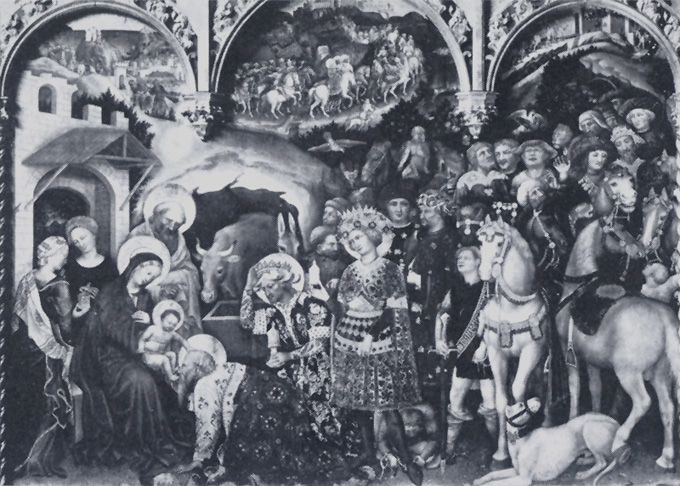
Gentile Adoration of the Magi 1423
Gentileschi Artemisia (1593–1651). Italian painter, daughter of O.G. She worked mainly in Naples in a strongly Caravaggesque style.
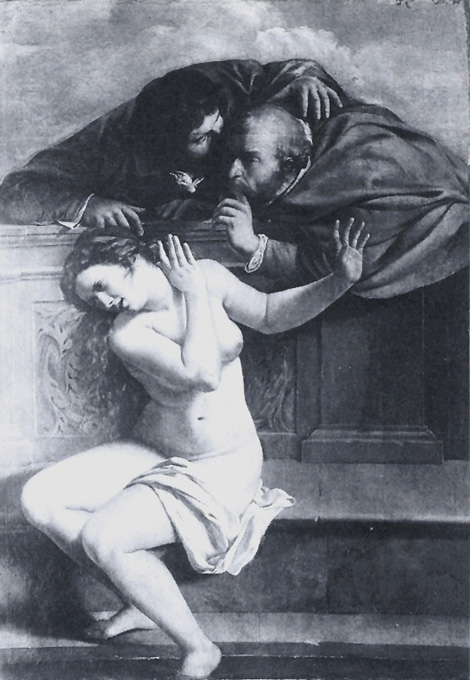
Artemisia Gentileschi Susanna and the Elders 1610
Gentileschi Orazio (1563–1647?). Italian Caravaggesque painter; from 1576 in Rome and from 1626 court painter to Charles I of England. His painting was emotionally gentler and his palette eventually lighter than Caravaggio’s, though the latter’s naturalism remained the major influence on G.’s work.
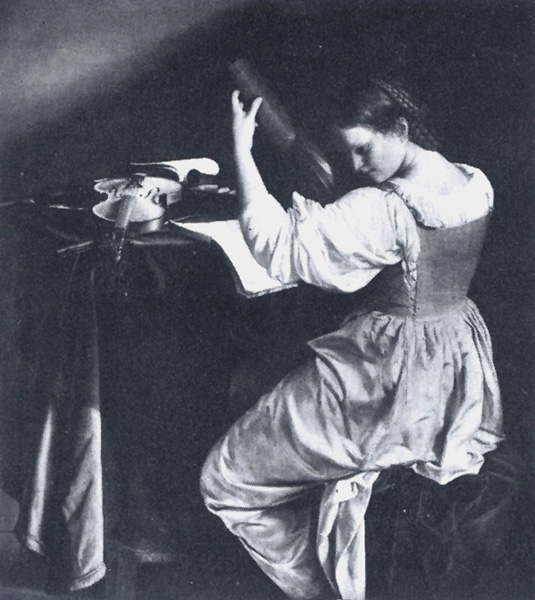
Orazio Gentileschi Lutenist c. 1626
Gérard François, baron (1770–1837). French Neoclassical painter of portraits and historical subjects, painter to both Napoleon and Louis XVIII. He was a pupil of J.-L. David but softened and sweetened his master’s style so that he stands closer to J.-B. Regnault. Portraits such as Jean-Baptiste Isabey and his Daughter and Madame Récamier are superficial but charming.
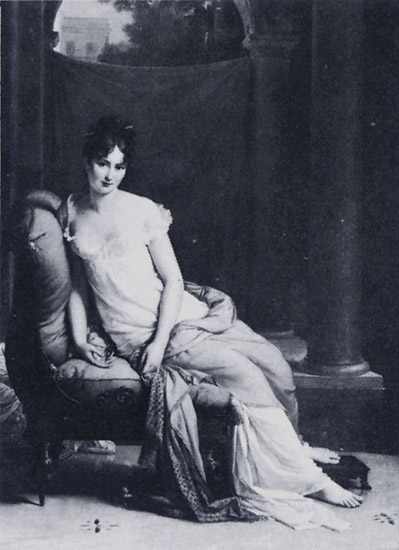
Gérard Madame Récamier 1805
Gerhaert Nicolaus (d. 1473). German Gothic sculptor in a markedly naturalistic style. He worked in Baden-Baden, Constance, Strassburg, Trier, Vienna and Wiener Neustadt. Works attributed to him include the tomb of Archbishop Jacob von Sierck, Crucifixion and the tomb of the Emperor Frederick III.
Géricault Théodore (1791–1824). French painter, graphic artist and sculptor of great promise and originality who strongly influenced his close friend Delacroix and French 19th-c. painting as a whole. G. was the pupil of the fashionable painters Vernet and Guérin; he studied at the Louvre, visited Italy and later Britain, but the example of Legros, painter of contemporary subject matter, decided the course of his development. His restlessness, excitement and disappointments found expression in his turbulent paintings and often morbid subject matter. His most famous composition The Raft of the ‘Medusa’ (1819) was based on the experiences of survivors from an actual shipwreck and is painted with a compelling realism based on the study of corpses and sickness. The painting was intended to shock, and to protest; inevitably it caused a scandal. G. became a leader of French Romantic painting. His interest in racing and riding is obvious from his paintings and lithographs of horses, where animal life achieves a symbolic power. In these paintings he was influenced by the popular British sporting print and by the British painter J. Ward. His portraits of the insane, e.g. The Mad Woman (1822–3), are extraordinary documents revealing G.’s psychology and insight.
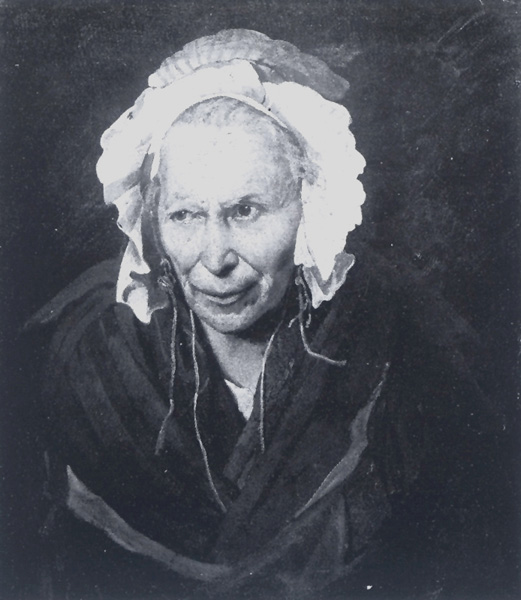
Géricault The Mad Woman 1822–3
Germ, The. The magazine of the Pre-Raphaelites. Its ed. was W. M. Rossetti and included contributions in prose and verse from D. G. Rossetti and other members of the ‘brotherhood’. Only 4 numbers were issued between January and April 1851.
Gerolamo dai Libri (c. 1474–1555). Veronese painter. The development of his style owed most to Mantegna but also something to Moroni and other Veronese painters. His works include Madonna and Child with St Anne and St Anne with Virgin and Saints.
Gérôme Jean-Léon (1824–1904). Facile French academic painter and sculptor, pupil of J.-L. David and an exponent of a prettified Davidian classicism. In some of his work he followed the vogue for oriental subjects.
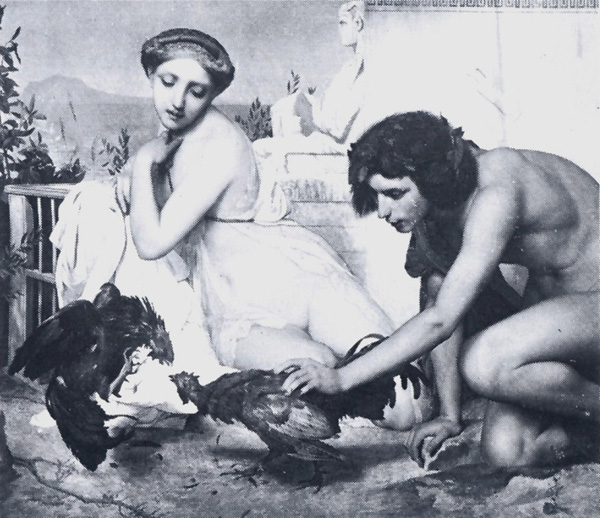
Gérôme The Cock Fight (detail) 1847
Gertler Mark (1891–1939). British-Jewish painter, an early member of the London Group (1915). His best works depict life in London E. End Jewish communities. Other pictures include nudes and still-lifes, some influenced by Post-Impressionism.
gesso. A form of plaster used as a ground for modelling or painting; it has a brilliantly white, smooth-textured surface. Frequently used on furniture in low relief, and gilded.
Gestural painting. A general term for the work of leading U.S. Abstract Expressionists, and also that of European artists working in the same vein: the marks on the canvas are considered to be the record of the artist’s characteristic physical gestures and therefore express not only his emotions at the time when the painting was made, but also his whole personality, calligraphic painting.
Ghiberti Lorenzo (c. 1378–1455). Italian sculptor, goldsmith, architect and writer on art of the Florentine school. Trained as a goldsmith, G. won the commission for the making of a pair of bronze doors for the Baptistery, Florence, in 1402, when he was about 24. His winning panel, Sacrifice of Isaac, can be compared with that of his older competitor, Brunelleschi, at the Bargello, Florence. Most of G.’s life was spent making the 28 panels for these doors (1404–24) and those of the even more celebrated Gates of Paradise, a 2nd pair also for the Baptistery (1430–47). His 3 large bronze figures for Or San Michele, Florence, St John the Baptist, St Matthew and St Stephen, were technically and artistically more ambitious than anything attempted before and won G. a wide reputation. To the famous baptismal font in Siena he contributed 2 panels in relief. The Baptist before Herod and Baptism of Christ. His large workshop was the training school of a whole generation of Florentine artists: Donatello, Michelozzo and Uccello were among his pupils. Despite this, every commission undertaken bears the unmistakable mark of his own very individual talent. Furthermore, G. was a leading citizen of Florence. He was also a humanist and scholar, the friend of such men as Leonardo Bruni. His own work shows study of the International Gothic style, the masters of Sienese painting and classical bas-reliefs. His learning and taste are reflected again in his writings on art, the 3 books of his Commentarii. Traditionally, it was Michelangelo who said that the 2nd pair of G.’s Baptistery doors were worthy to stand as the Gates of Paradise.
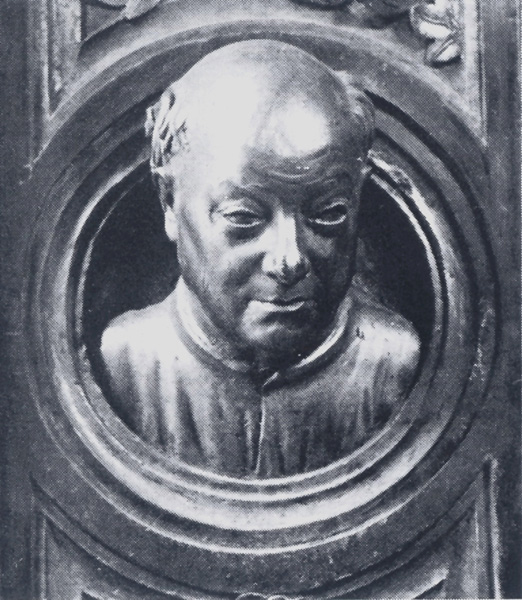
Ghiberti Self-portrait on The Gates of Paradise 1430–47
Ghirlandaio Domenico (1449–94). Italian painter of the Florentine school. Trained as a goldsmith by his father, G. later won a reputation chiefly as a fresco painter, creating a serene style which reflects the full development of Florentine painting before Leonardo da Vinci. His earliest known works are the frescoes above the Vespucci altar, Ognissanti, Florence. Later, for the same church, he painted St Jerome and a Last Supper warm with the mellow light of a Tuscan evening. In 1481–2 G. was in Rome painting 2 frescoes for the Sistine Chapel, the survivor of which, The Calling of the Apostles Peter and Andrew, shows G.’s habit of including portraits of people he knew among the witnesses to a religious scene. Again, in the frescoes of the Sassetti chapel (S. Trinità, Florence) he includes portraits of members of the Medici, Sassetti and Spini families. Other works by G. are Visitation, Birth of the Virgin and other frescoes, and Madonna and Saints. G.’s workshop assistants included his brother Davide (1452–1525). His son Ridolfo (1483–1561) was a minor Florentine painter. More important, Michelangelo was a pupil and learned from G. the technique of fresco painting.
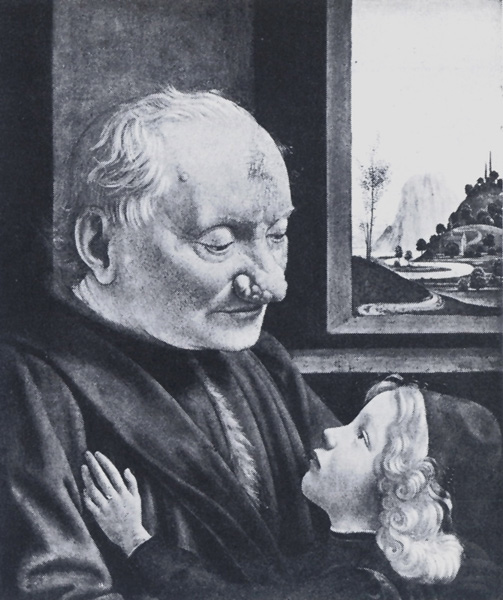
Ghirlandaio Old Man and his Grandson
Ghislandi Giuseppe. Fra Vittore del Galgario
Giacometti Alberto (1901–66). Swiss sculptor and painter; father Giovanni (1868–1933) and 2nd cousin Augusto (1877–1947) were painters. G. studied at the Geneva School of Arts and Crafts (1919) and under Bourdelle in Paris (1922–5) where (apart from the war years) he thereafter lived. G.’s early works, e.g. Two figures (1926), have an elemental, primitive force; later, more Surrealist constructions like The Palace at 4 a.m. (1933) already have the attenuation which increasingly became the feature of the human figures he produced from c. 1940. The fraility of these strange, desolate matchstick-men (e.g. the group City Square, 1949) is emphasized by the heavy bases on which they are usually placed; the spatial relationships created, quite different from the monumental quality of traditional sculpture, have had great influence on contemporary work. G. painted a series of meticulously observed portraits, notably a 5-year study of Isabel Lambert and Portrait of Jean Genet (1955).
Giambologna. Giovanni da Bologna
Giambono Michele Giovanni Bono called (fl. 1420–62). Venetian painter influenced by the International Gothic style of Gentile de Fabriano and Pisanello. His best-known authenticated work is his Madonna in the Palazzo Venezia, Rome.
Gibbons Grinling (1648–1721). British wood carver. He enjoyed royal patronage under Charles II and George I and also worked under Wren. G.’s ornamental carving is of exquisite finesse and delicacy; his preferred subjects were fruit, flowers, lace motifs, etc. Examples of his work are at Windsor, St Paul’s, London, and many country-houses, most notably Petworth, where there is a magnificent room by him.
Gibson John (1790–1866). British Neoclassical sculptor who went to Rome in 1817 and settled there, only returning to Britain in 1844 and 1850 to execute royal commissions. He worked under Canova and Thorwaldsen and ranked next to them in importance. In later works he revived the Greek practice of tinting marble, as in his Tinted Venus.
Gifford Sanford R. (1823–80). U.S. painter primarily of landscapes, who was influenced by Cole.
Gilbert Alfred (1854–1934). British sculptor whose work is a delightful amalgamation of his inventions and mastery of new techniques of bronze casting, showing great sensitivity to materials, colour and texture. He constantly reworked and re-interpreted images, figures, motifs and themes as in Kiss of Victory (1878–81), Victory (1887), Eros (1891–2) and Icarus (1884 and 1889).
Gilbert Sir John (1817–97). British draughtsman, ill. and painter known as ‘the Scott of painting’ because of his choice and romantic treatment of historical and chivalric themes. He worked for The Illustrated London News (1842–72) and ill. an ed. of Shakespeare (1856–60).
Gilbert and George (Gilbert Proesch, Italian, b. 1943; George Passmore, British, b. 1942). In 1969 G. & G. created their first ‘singing sculpture’ while still students at St Martin’s School of Art, London. Hands and faces painted gold and wearing staid business suits, they moved marionette-like on a table in a work that came to be known as Underneath the Arches, after the Flannagan and Allen song played on a cassette tape-recorder beneath the table. Refusing to separate life from art, their activities as living sculpture from their activities at home in the East End of London, G. & G. have achieved great international prominence working in various media as living sculpture, in large pastoral drawings, in small photographic pieces, books or genteel poems, and recently in their film, The World of Gilbert and George, and in many-panelled large, 14 x 36 ft (4 x 11 m.) polychrome tinted mono photographs. Their use of their own persons as art material suggests an affinity with artists such as Manzoni or Klein.
gilding. The process by which another metal is covered with a thin layer of gold. Traditionally silver was the most common metal to be gilded, but base metals are also used extensively. The old method of g. was by a mercury distillation process, but in the 19th c. electrolysis provided a safer, cheaper though less efficient method.
Gill Eric (Rowland) (1882–1940). British sculptor, wood engraver and typographer. G. was deeply religious (he became a Catholic in 1913) and held views of the artist-craftsman and the social place of the arts similar to those of William Morris. G.’s simple yet strong line was best adapted to bas-relief, e.g. the Stations of the Cross in Westminster cathedral (1913–18), and its grandest and perhaps most lasting expression is in the chiselled elegance of his Perpetua and Gill Sans-serif type-faces. His writings include: Christianity and Art (1927) and Work and Property (1937).
Gilliam Sam (1933– ). U.S. African-American Color-field painter who came to prominence in the late 1960s and early ’70s with stained, unsupported canvases draped or suspended from walls and ceilings. In the ’70s he began making geometric collages influenced by the music of John Coltrane and Miles Davis. Later in the ’80s G.’s painting technique changed from staining to an impasto of layers of acrylic paint and gels, into which are cut geometric shapes reminiscent of African-American patchwork quilts; this phase led to series of textured paintings which also incorporate metal forms.
Gillot Claude (1673–1722). French decorative and genre painter and draughtsman of the Rococo period. He was director of costumes and decoration at the Paris Opéra and the 1st French painter to produce commedia dell’arte scenes. Watteau and Lancret were his pupils.
Gillray James (1757–1815). British engraver and caricaturist, best known for his cartoons of the Napoleonic Wars period. He exploited the same vein of satire as Hogarth, but was far more personal in his attack. Even at their most scurrilous, his drawings are composed with skill and wit, e.g. A Voluptuary, lampooning the greed of the Prince Regent.
Gilman Harold (1876–1919). British painter of portraits, interiors and landscapes, member of the Camden Town Group and 1st president of the London Group. He was originally associated with Sickert but later fell under the influence of the Post-Impressionists, e.g. Mrs Mounter.
Gilpin Sawrey (1733–1807). British painter of animals, particularly horses, sporting scenes and (less successfully) historical subjects. He was a considerable draughtsman and his horse paintings were ancestral to French Romantic painting.
Ginner Charles (1878–1952). French-born British painter. A founder-member of the Camden Town Group (1911), he defined its style as Neo-realism. G. also admired Van Gogh and other Post-Impressionists.
Giordano Luca (1632–1705). Neapolitan painter, pupil of Ribera and Pietro da Cortona and remarkable for his facility and eclecticism. He helped to change the character of Neapolitan art, previously dominated by Ribera, by introducing a Baroque style and lighter treatment. His prodigious output included the ballroom ceiling, Palazzo Riccardi, Florence (1682), and ceilings in the Escorial, Madrid (1692).
Giorgione, born Giorgio, or Zorzi, da Castelfranco (c. 1477–1510), Italian painter of the Venetian school. Despite his great influence on painting and a reputation which has lasted without fluctuating for 400 years, little is known of his life and few paintings are certainly by him. His master was Giovanni Bellini. In 1508 he was a colleague of Catena, in 1507–8 he was painting at the Doge’s Palace, Venice. In 1508 there was a dispute over the frescoes he was painting on the outside of the Fondaco dei Tedeschi, Venice. Titian was also engaged on this commission. Most authorities are agreed that G. was the more original genius of the 2 and that Titian bore G.’s influence for the rest of his life, but this cannot be proved on evidence – almost nothing remains of the frescoes.
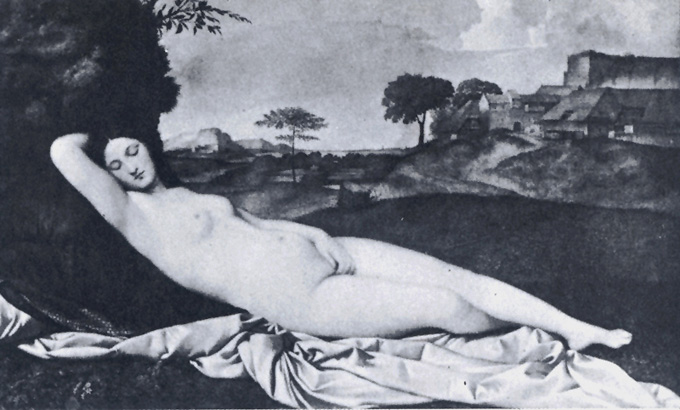
Giorgione Sleeping Venus c. 1508
Although G. painted commissions for churches such as the Castelfranco Madonna, it was the small paintings in oil he painted for private collectors which are G.’s great innovation in art. These are neither portraits, nor recognizable subjects from myth or history. Indeed, it is almost impossible to determine what is happening in The Tempest, though a profoundly evocative mood is created and, instead of resenting the fact that there is no obvious subject, the imagination is gratified by being freed. However quietly accomplished by G., this was a revolutionary new conception of what a painting should be. Such paintings found patrons; they were highly prized before G.’s early death (probably of plague), and works left unfinished in his studio were completed by other artists: Sleeping Venus by Titian and Three Philosophers by Sebastiano del Piombo. Other major works attributed include: Adoration of the Magi, Judith, Laura, Shepherd with Pipe and Fête champêtre.
Giotteschi. Name given to the followers of Giotto. They included Bernardo Daddi, Giottino, Maso di Banco and Taddeo Gaddi but many works in Giotto’s style are anon.
Giottino. Florentine painter of the mid-14th c. A somewhat shadowy figure, probably a pupil of Giotto, perhaps identical with a Giotto di Maestro Stefano. The work generally attributed to him is the S. Remigio Deposition.
Giotto di Bondone (c. 1266–1337). Italian painter and architect. The significance of G.’s original vision of the natural world and his genius in communicating it were proclaimed by Boccaccio, Dante and Petrarch in the 14th c. and G. has been celebrated ever since as the true founder of Florentine painting and an initiator of Western art. The outline of his life can only be put forward tentatively. By tradition he was the pupil of Cimabue, working with his master both in Florence and Rome. Then or later he was undoubtedly in contact with the work of the Roman painter P. Cavallini and the sculptor Arnolfo di Cambio, which paralleled the break Cimabue had made with the conventions of Byzantine art in Italy. G.’s earliest work may have been connected with the mosaics of the Baptistery, Florence. He was almost certainly painting at Assisi by about 1290. In 1300 he was probably employed in Rome and soon after in Florence. The famous frescoes of the Arena, or Scrovegni chapel, Padua, occupied him during the 1st decade of the 14th c. Either in 1300, or, more likely, in about 1313, G. designed the Navicella, ‘Ship of the Church’, mosaic in St Peter’s, Rome. During the 2nd decade of the 14th c. he painted the Cappella di S. Maddalena at Assisi, the frescoes of S. Antonio and the Palazzo della Ragione, Padua, and works in Rimini. In the 3rd decade much of his time was spent in Florence, where among other undertakings he painted the frescoes of S. Croce. Subsequently he painted in both Naples and Milan, but in 1334 he was present to be nominated architect of Florence cathedral and the city fortifications. Later that year he began the Campanile, which still bears his name, but which was considerably altered from his plan.
G. consolidated the break others had made with Byzantine art, but his real achievements were those of a narrator of genius and a master draughtsman. The last enabled him to create the illusion of texture, weight, expression and, above all, depth in his paintings. Thus his scenes are visually convincing. What is more, he was able to give expression to complex human emotions in a way that is both subtle and tellingly simple. G.’s influence, paramount for a generation after he died, later surrendered to others, only to be revived by artists, chiefly Florentine, who were interested in draughtsmanship as a means of expressing reality. Michelangelo admired and made copies of his work.
Of G.’s works, the frescoes attributed to him in the upper and lower churches, Assisi, have been frequently challenged. The St Francis cycle in the upper church is almost certainly his, though the later frescoes were probably painted to his design by assistants. Crucifixion, Lamentation and Joachim’s Dream are among the most outstanding scenes depicted in the Scrovegni chapel, Padua. Among his panel pictures the most important is unquestionably the Ognissanti Madonna; while other works generally attributed to him are Crucifix and Dormition of the Virgin.
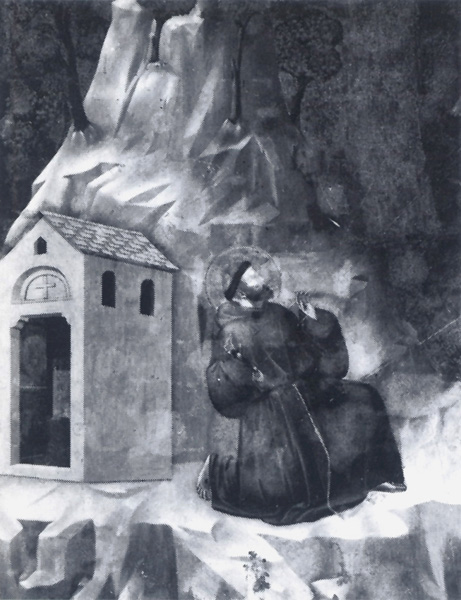
Giotto St Francis Receiving the Stigmata (detail) c. 1320
Giovanni da Bologna. Bologna
Giovanni da Milano (fl. mid-14th c.). Italian painter, follower of Taddeo Gaddi. He worked in Florence and Rome. There are frescoes by him in the Rinuccini chapel, S. Croce, Florence.
Giovanni di Paolo or Giovanni dal Poggio (c. 1403–82/3). Italian painter of the Sienese school. G.’s paintings must have appeared old-fashioned even in his own day, but his strong narrative sense makes strangely effective such imaginative and brightly coloured works as A Paradise and versions of scenes from the life of St John the Baptist.
Girardon François (1628–1715). French sculptor, famous exponent of classicism who worked for Louis XIV at Versailles. His most famous sculptures there are Apollo Tended by Nymphs (begun 1666; original grouping altered) in the grotto of Thetis, and Rape of Persephone (begun 1677) in the gardens. His other work includes the monument to Richelieu (1675–7).
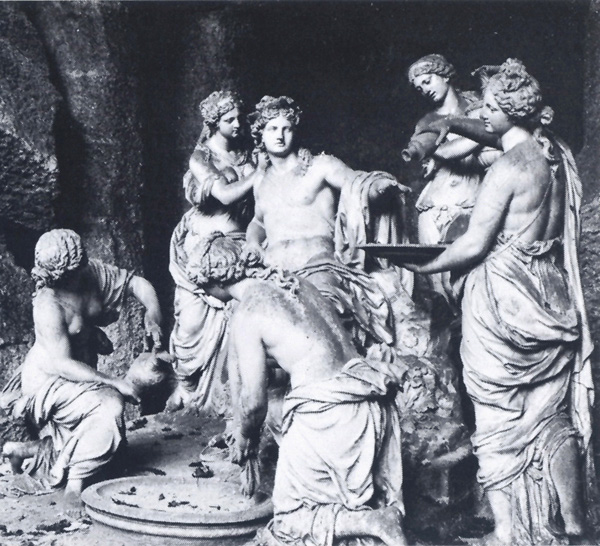
Girardon Apollo Tended by Nymphs begun 1666
Girodet de Roucy-Trioson, Anne-Louis (1767–1824). French painter, ill. and poet; pupil of J.-L. David. His painting The Burial of Atala (1808), based on a novel by Chateaubriand, is a notable early expression of French Romanticism in theme and presentation although it retains the balanced composition and smooth technique of the classical school.
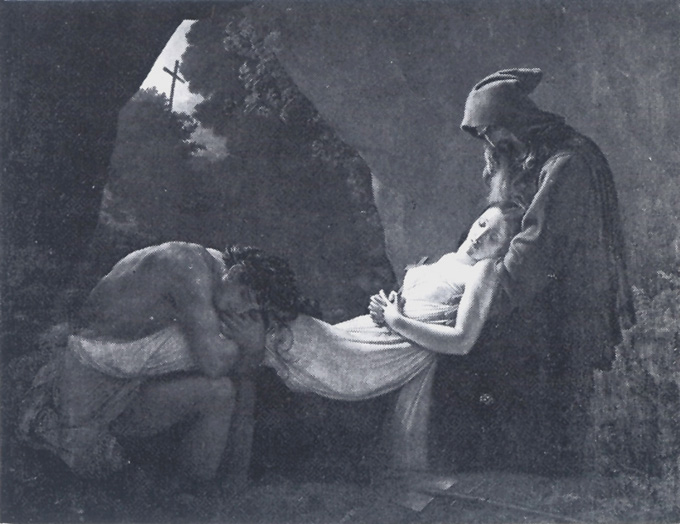
Girodet The Burial of Atala 1808
Girtin Thomas (1775–1802). British painter. Together with Turner, G. revolutionized watercolour technique, chiefly by abandoning the use of underpainting for a much freer style in which colours were applied directly on to semi-absorbent paper. G. travelled all over Britain painting and on a visit to Paris painted street scenes, etc. which show the variety and richness of the effects that could be achieved in the new technique. G. did much to raise British landscape painting in watercolour from topographical drawing to a fine art. Among his best paintings are Kirkstall Abbey and The White House.
Gislebertus. French sculptor who signed his name under the tympanum of Autun cathedral, Burgundy (1120–30), and was presumably the master in charge of the whole sculptural programme. The tympanum shows the Last Judgement, the capitals inside the church episodes from the life of Christ, allegories and parables. They are among the masterpieces of Romanesque art, ranging from horrific images of damnation and terror to the sensuous charm of the well-known Eve.
Giuliano da Maiano (1432–90). Florentine architect and sculptor; from 1477 master architect for Florence cathedral. His masterpiece was the cathedral at Faenza (completed 1486). He built the Fina chapel, Collegiata, S. Gimignano in collaboration with his brother Benedetto Da Maiano (1442–97), sculptor and architect of the Palazzo Strozzi, Florence.
Giulio Romano (Giulio Pippi) (1492 or 1499–1546). Italian Mannerist painter and architect, a pupil of Raphael, whom he assisted in the Vatican Stanze and Loggie. He continued Raphael’s later style, but with harsher colours, greater distortions and more violent composition; he also did a famous series of pornographic engravings. In 1524 he went to Mantua in the service of the duke and turned mainly to architecture. There he built the Palazzo del Tè (1526–34), his masterpiece and the prime example of Mannerist architecture: orthodox classical motifs are wilfully misused, rhythms irregular, keystones dropped, columns left rough as if from the quarry, etc. The impression of instability is epitomized in the Sala dei Giganti (also painted by G.R.), where the architecture of the room appears to be on the point of collapsing; the illusionistic frescoes The Fall of the Titans covering the whole room from floor to ceiling, showed a melodramatic exaggeration of Raphael’s style.
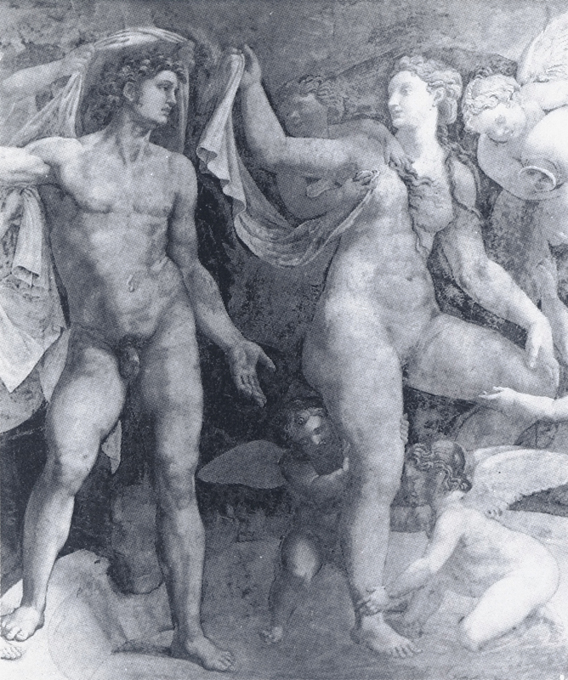
Giulio Romano Fresco in the Sala di Psiche (Palazzo del Tè, Mantua) 1527–31
Glackens William James (1870–1938). U.S. painter (in an Impressionist style influenced by Renoir) and also ill.; member of The Eight.
Glarner Fritz (1899–1972). Swiss painter, the leading exponent of Neo-plasticism in the U.S.A. where he settled in 1936.
Glasgow school. A term confusingly applied to two quite different groups of late 19th- and early 20th-c. Scottish painters: 1. The group led by William Yorke Macgregor, and also including John Lavery and David Cameron, which was influenced by the more decorative aspects of French Impressionism; 2. The group led by the architect C. R. Mackintosh which produced a distinctive Scottish version of Art Nouveau.
glass print, cliché-verre
Gleizes Albert (1881–1953). French painter; deeply impressed by a painting by Le Fauconnier, he abandoned his early Impressionist manner in 1910 and came in contact with other Cubist painters. He was influenced by Léger and later by Gris, but paintings such as Harvesters (1912) reveal a limited conservative understanding of Cubism. He exhibited with the main Cubist group in 1911 and 1912 and his attempt to revive the group after the war suggests a need to belong to a corporate movement. Du cubisme (1912) by G. and Metzinger was an attempt to clarify its history and principles.
Gleyre (Marc) Gabriel-Charles (1808–74). Swiss history and genre painter who settled in Paris, took over the studio of Delaroche and is remembered for having taught there Bazille, Monet, Renoir, Sisley and Whistler among others. Though academic himself he acknowledged the talents of these younger artists.
glyptic. Term meaning ‘carved’, used in sculpture to describe the method of working in which the form is carved directly from wood, stone, etc. instead of being built up in wax or clay prior to casting.
Gobelins. A firm of Paris tapestry weavers, transformed by Louis XIV and Colbert in 1662 into the Manufacture Royale des Meubles de la Couronne with the twofold aim of supplying the royal palaces with furnishings and building up a state manufacture of luxury articles to prevent the need for foreign imports. The presiding genius was Charles Le Brun the painter, who provided designs for all kinds of furnishings and controlled the factory in the greatest detail to ensure the highest standards of workmanship. Not only tapestries were produced, but also furniture, sculpture, works in gold and silver, carriages and architectural details, even door-locks.
Gober Robert (1954– ). U.S. artist of simulated objects (sinks, urinals and baby cribs) and installations. The objects recall Minimal art, but in fact are always slightly altered everyday readymades. The installations, like the objects, are redolent with deep poetic feeling and ambiguity of meaning, with dream-like ‘narratives’ which are also disturbing and threatening, e.g. Male and Female Genital Wallpaper, Wedding Gown and Hanging Man/Sleeping Man (all 1989). G.’s major untitled Installation was displayed at the Dia Center for the Arts, N.Y., in 1992.
Goeneutte Norbert (1854–94). French painter, engraver and lithographer; friend of Manet and Renoir. He specialized in Paris street scenes, and was admired by his contemporaries for his remarkable and subtle draughtsmanship, his keen observation and satirical humour.
Goes Hugo van der (c. 1440–82). Early Netherlands painter and, after Van Eyck, the most gifted artist of the school; probably born in Ghent. He entered the artists’ guild there in 1467 and was dean in 1474. Shortly afterwards he became a lay brother at the monastery of Roode Clooster near Brussels and from this time he was subject to increasing attacks of depression and mental instability. He continued to paint until about 1481. His greatest work is unquestionably the large triptych commissioned by the Florentine merchant Portinari in 1475. Taken to Florence, this masterpiece had a considerable influence on Florentine painting, e.g. in the later work of Ghirlandaio. Among other important works are Adoration of the Shepherds, Adoration of the Kings, Fall of Adam, Lamentation, Virgin and St Anne, the 2 large organ shutters at Holyrood Palace, Edinburgh, Crucifixion and the almost mystically intense Death of the Virgin. G.’s only true follower was the Master of Moulins.
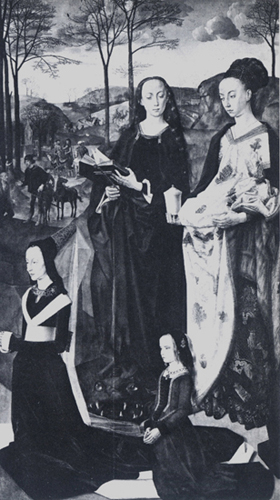
Goes Portinari triptych (right wing) 1475
Goethe Johann Wolfgang von (1749–1832). German poet, writer and polymath, the major influence on German Romanticism and European Romantic poetry and art. G. is best known for his epistolary novel The Sorrows of Young Werther (1774; 2nd version 1787) and the verse drama Faust (1808; 1823; 1832; 1838). At 1st G. identified art with nature and maintained the Romantic notion of individuality and genius. He later turned to the classicism of the Renaissance and developed the idea of ‘beauty’ as the symbolic expression of the inner laws of nature, as exemplified in the art of antiquity, and apprehended intuitively. He wrote extensively on art, e.g. Über Kunst und Altertum (1816–32), including a treatise on colour theory, Zur Farbenlehre.
Gogh Vincent van (1853–90). An artist whose work is one of the formative influences of 20th-c. art and whose life has become almost a legend. The son of a Dutch parson, he was employed by a firm of art dealers in The Hague, London and Paris. Afterwards he became in turn a schoolmaster in Britain, a missionary to the miners in the Borinage, Belgium, and finally, in 1880, an artist. Van G. was virtually self-taught, though he received some technical advice in oil and watercolour painting from a cousin, the artist A. Mauve. In 1886 he left Holland for Paris, where he lived with his brother Theo, one of the few art dealers encouraging such artists as Bernard, Degas, Gauguin, Seurat and Toulouse-Lautrec. Impressed by the work and personalities of these painters, Van G. conceived the idea of founding a ‘Studio of the South’ at Arles as a working community for progressive artists. He himself went to Arles early in 1888, but the only other painter he persuaded to join him was Gauguin, who visited him at the end of 1888. A violent quarrel between the 2 precipitated the first of Van G.’s periodic attacks of madness in which he cut off part of his ear. 2 years later, at Auvers-sur-Oise, he shot himself. He had sold 1 picture during his lifetime.
Early work of Van G.’s Dutch period is heavy, rich but subdued in colour, with a few fine effects. The Potato Eaters is typical. After his contact with other painters in Paris, with Japanese prints and the work of such original colourists as Delacroix and A. Monticelli, Van G.’s style changed radically to the brilliant colour and frenzied, thick brushwork of his Arles period. Among hundreds of paintings of the last two and a half years are: Cornfield and Cypress Trees, Starry Night, La Mousmé, Sunflowers and Self-portrait. His watercolours (e.g. Fishing Boats at Santeo Maries) and drawings are of equal intensity and value, while the letters he wrote to his brother Theo are important literary and human documents in their own right.
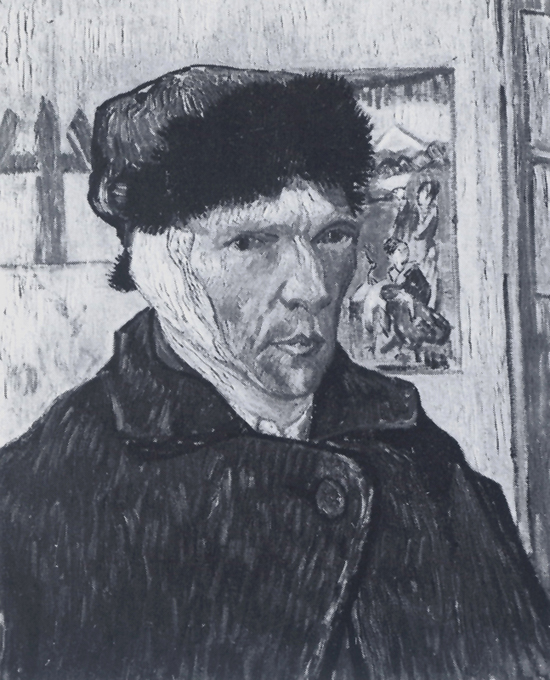
Van Gogh Self-portrait with Ear Cut Off 1889
Golden Fleece, The. A monthly magazine, printed in Moscow, running from 1906 to 1909, ed. and publ. by the wealthy painter Nikolai Ryabushinsky. Chiefly an art magazine, profusely illustrated, it also publ. poetry and literature of the late Symbolist school. It sponsored 2 historic Franco-Russian art exhibitions in Moscow in 1908 and 1909 which introduced the French Fauves and 1st brought together the Moscow and Paris avant-garde painters.
golden section, golden mean. The name given in art to the mathematical relationship between 3 points in a straight line (see diagram) in which the ratio AC: BC equals the ratio BC: AB.

This relationship was invested with an almost mystical significance by some Renaissance theorists and used extensively by certain painters, above all Piero della Francesca.
Golkonda. Deccani miniature painting
Goltzius Hendrick (1558–1617). Dutch engraver and, from 1600, painter influenced by Italian Mannerism. He worked in Haarlem and was the 1st engraver to exploit all the tonal possibilities of line engraving. Although his work lost some of the characteristics of the medium it achieved something of the subtle gradations of oil painting and exercised great influence on the growth of reproduction engraving.
Golub Leon (Albert) (1922–2004). U.S. figurative painter, co-founder of School of Chicago Art after World War II. His paintings (e.g. the series ‘Mercenaries’ and ‘Interrogations’, begun in 1976) often have a harsh and violent narrative content reflecting existential and political concerns and, from 1955, his strong opposition to Abstract Expressionism. G.’s large-scale works are characterized by their surfaces which are built up of successive layers of lacquer. He often exhibited together with his wife Spero.
Gombrich Sir Ernst (Hans Josef) (1909–2001). Viennese-born British art historian. He studied in Vienna and at the Warburg Institute, London (1936). From 1949 until his retirement in 1976, he was Director of the Warburg Institute and Professor of the History of Classical Tradition, University of London. His best-known and highly influential books are The Story of Art (1950), Art and Illusion (1960), Meditations on a Hobby Horse (1963) and Norm and Form (1966).
Gonçalves Nuno (c. 1438–81). Portuguese painter rediscovered in the 20th c. and regarded as the founder of the Portuguese school. He is known to have been active as court painter to Alfonso V. c. 1450–72; the only work attributed to him with certainty is the polyptych for the convent of St Vincent, Lisbon (c. 1465–7), 6 panels which depict the whole of Portuguese society crowded about King Alfonso and Henry the Navigator as they pray to St Vincent. G. was a master of colour and of composition. The modelling of his figures is sculpturesque and their heads are painted with a sharp insight which anticipates the psychological portrait.
Goncharova Natalia (1881–1962). Russian painter and theatrical designer who studied under the sculptor Trubetskoy in Moscow where she met Larionov, the major influence in her work as well as a life-long companion. A preoccupation with icon painting and national folk-art characterizes her best-known work such as designs for Diaghilev’s Le Coq d’Or, Les Noces and Firebird. Before leaving Moscow for Paris in 1915, she was well known in Russia as a Futurist and Rayonnist painter.
Goncourt the brothers Edmond de (1822–96) and Jules de (1830–70). French writers who worked in collaboration until the younger died of syphilis. Edmond cherished the memory of Jules, continued the diary they had begun in collaboration and left money for the founding of the Académie G. and the Prix G., by which they were to be jointly commemorated. Well-to-do, self-absorbed bourgeois, they looked upon themselves as exceptional, sensitive creatures with a literary and artistic mission. They helped to create a fashion in 18th-c. French furniture and paintings and in Japanese art. Their extremely detailed books on the social and artistic life of the 18th c. are still read. They applied the same technique of close documentation and mannered writing, which they called ‘l’écriture artiste’, to the lurid contemporary social subjects they dealt with in their novels, and so were pioneers of Realism and Naturalism: Germinie Lacerteux (1864; Germinie Lacerteux, 1887) and Madame Gervaisais (1869). Now their chief claim to fame is the Journal des Goncourt (complete text, 22 vols 1956–8; The Journal of the de Goncourts (extracts) 1915). Its accounts of the conversation of Daudet, Flaubert, Gautier, Saint-Beuve, Turgenev, Zola, etc. are absorbing though often malicious.
Gonzalèz Eva (1849–83). French Impressionist painter, pupil and close follower of Manet who painted a famous portrait of her.
González Julio (1876–1942). Spanish sculptor, who lived in Paris from 1900. He began his career as a painter but found his métier as a sculptor in iron, making use of new industrial processes, and inspired by Cubism and a desire to create forms based on the natural limitations of the material. In his abstract and realistic work alike, observed nature was the source of his ideas.
Gore Frederick Spencer (1878–1914). British painter of landscapes, ballet and music-hall scenes and interiors, closely associated with Gilman and 1st president of the Camden Town Group. He first worked in France and was strongly influenced by Impressionist painting through his friendship with L. Pissarro; he later followed the Post-Impressionists.
Gorky Arshile (1904–48). Armenian-born U.S. painter who settled in the U.S.A. in 1920. He met S. Davis in N.Y., c. 1929, and De Kooning in 1933. His early pictures derived from Cézanne and Picasso. A series of family portraits were true to life but also showed the germ of G.’s highly individual style: images flat on the surface of the canvas, pre-figuring later De Kooning and G.’s own later flat, biomorphic works, which were released from use of Surrealist automatism. G. had the greatest influence on subsequent developments in U.S. art and he anticipated and pioneered Abstract Expressionism.
Gossaert Jan. Mabuse
Gothic. General term applied to the style in the arts of the high Middle Ages; it was coined contemptuously in the 17th c., the Goths being among the barbarian ancestors of medieval Europe. In architecture it is applied to the style developed in the Île de France in the 12th c. (Suger) characterized by the pointed arch, soaring piers, elaborate vaults, extensive use of glass and increasingly intricate tracery. Rib-vaults and pointed arches are found in Romanesque, but their fusion, with the added element of the flying buttress, produced G., a new style in architecture. The emphasis was on dynamic line rather than on weight and mass, as in Romanesque, and the more elegant working out of engineering problems combined with the new spirit of religious mysticism and aspiration produced an ever stronger emphasis on vertical and height, evidenced in spires and flèches. Extensive use was made of sculpture and stained glass as decorative features. The style spread to Britain, where it developed the 3 periods of Early English, decorated and perpendicular, and somewhat, later to Germany. Spanish G. was deeply influenced by French, though a distinct national style evolved in the 15th and 16th cs. Italy remained outside the mainstream (e.g. Siena cathedral; Frari, Venice). In Britain the gradual 18th-c. renewal of interest in all things ‘Gothick’ led eventually to the Gothic revival of the 19th c. and the Neo-Gothic style in architecture, Inter national G. is a term used in painting.
Gottlieb Adolph (1903–74). U.S. Abstract Expressionist painter, with Rothko and others a founder of the Ten Group, N.Y. (1935). Early in the 1940s, under the influence of primitive art, he invented the ‘pictograph’, the compartmental arrangement of symbolic calligraphic motifs. Later he concentrated on exploring the relationship between 2 contrasted shapes and produced a series of ‘burst’ paintings. His decorative works include murals for the Post Office, Yerington, Nevada (1939), and tapestries for the Synagogue, Millburn, New Jersey (1951).
Götz Karl Otto (1914– ). German painter of expressionistic abstractions. He exhibited with the Cobra group.
gouache. Watercolour paint made opaque by the addition of white. Effects similar to those of oil paint can be obtained with g. but it has the defects of lightening in colour as it dries and cracking if used thickly. It was used by the medieval ms. illuminators and later by many continental artists. In Britain it was less popular than transparent watercolour but was used by Sandby. It has been revived by 20th-c. painters and designers. In less good quality it is known as poster colour.
Goujon Jean (fl. 1540–62). The greatest French sculptor of the mid-16th c. who worked first in Rouen, then in Paris. He was influenced by the Mannerism of Parmigianino, G. B. Rosso and Cellini but gave the style a personal interpretation derived from classical sculpture. He executed relief decoration for the rood-screen of St Germain l’Auxerrois, Paris, and the Fontaine des Innocents, Paris, and decorative work for the Louvre (spoilt by 19th-c. restoration).
Gowing Sir Lawrence (1918–91). British painter, writer on art and teacher. He studied painting with Coldstream at the Euston Road school (1938) at the time when Pasmore and Moynihan also taught there, and formed close friendships with G. Bell and Stokes by whom he was influenced. He painted portraits, landscapes and figures. His important and highly stylistic writing includes publs on Renoir, Vermeer, Turner, Cézanne, Matisse and L. Freud.
Goya y Lucientes, Francisco José de (1746–1828). Spanish painter and graphic artist. Born at Fuendetodos, by 1760 G. was apprenticed in Saragossa to José Luzán, an artist who studied under Neapolitan masters. Francisco Bayeu, a former pupil of Luzán, had won fame in Madrid as assistant to the royal painter A. R. Mengs, and G. followed Bayeu, became his pupil and married his sister in 1773. Meanwhile, in 1771, G. had made a visit (which is rich in legend if not in facts) to Italy and he painted commissions for churches in the vicinity of Saragossa at the end of the same year. He settled in Madrid in 1775 and in 1776 was commissioned to paint cartoons for the royal tapestry works. At first G. followed conventional subjects, the court pastorals that relied on French and German Rococo models and the painting of Tiepolo and the Neapolitans. Soon, however, his own painting became noticeably freer and he introduced scenes observed from Spanish life, e.g. Stilt Walkers, Blind Guitarist. In the course of his work he was admitted to the Royal Colls where he engraved copies of Velázquez. Stimulated by Velázquez and by mezzotints after Gainsborough and Reynolds, he began to paint portraits.
The 1780s record his increasing fame and an amazing variety of activity. In 1782 he portrayed the powerful minister Floridabianca; in 1786 he painted Charles III Hunting. He had many commissions from the Church including the 2 St Francis Borgia scenes for Valencia cathedral. Among small works he did for his own pleasure is the remarkable view of Madrid, Fiesta of San Isidero. In 1780 he had submitted his Crucifixion to the academy of San Fernando, being elected a member unanimously and appointed deputy director in 1785. At the court he was progressively pintor del rey (1786), pintor de cámara (1789), and primer pintor de cámara (1799). A change in his style is noticeable after his illness in 1792, which left him deaf. The portraits show greater insight, e.g. Dr Peral, and almost cruel objectivity in the famous Charles IV and Family. G.’s attachment to the duchess of Alba is celebrated in 2 fine portraits. He castigated the follies of the court, superstition and the vanity of women in Los caprichos, his engravings of 1796–8. In the same period he painted the Maja Clothed and Maja Unclothed. His religious paintings are revolutionarily free in technique, but obviously profoundly felt, e.g. Betrayal of Christ and the frescoes of S. Antonio de la Florida, Madrid. Subsequently G. chronicled the horrors of Napoleonic occupation in The Second of May (Uprising) and The Third of May (Executions) as well as in the engravings Disasters of War and his drawings. After the restoration of the reactionary Ferdinand VII, G. retired to the outskirts of Madrid. The decorations in his own house, called during his lifetime the House of the Deaf Man, now removed to the Prado, remain among the strangest and most original paintings ever painted both in subject and technique. They include Witches’ Sabbath, Saturn Devouring his Child and Fantastic Vision. In a self-chosen exile in France G. continued to paint, engrave and practise lithography with undiminished vigour until his death. Milkmaid of Bordeaux, one of his last works, has a frenzied brushwork which looks forward to the effects of the Post-Impressionists. G. was the favourite of French writers such as Baudelaire. Artists of almost every major school have been influenced by his work in painting and the graphic arts from Delacroix and Géricault, Manet and Daumier to Käthe Kollwitz and Picasso.
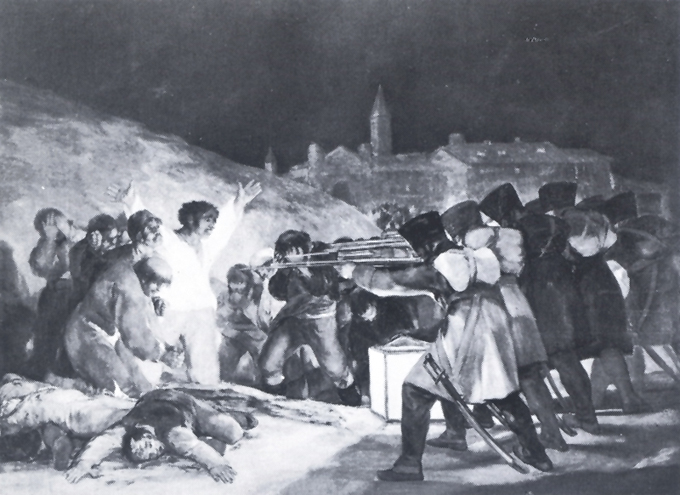
Goya The Third of May (Executions) 1814–15
Goyen Jan van (1596–1659). Dutch painter and father-in-law and teacher of Jan Steen. With Pieter de Molijn and S. van Ruysdael G. established the early school of Dutch naturalistic landscape painting. He executed a great number of paintings. Those of the middle period are often so austere in colour as to be almost monochrome, and they were once thought to have faded. His best-known works are views of the towns of Holland, of which View of Dordrecht is a good example with its wide sky and low horizon, the bustle of human life confined to the bottom quarter of the painting.
Gozzoli Benozzo. Name adopted by Benozzo di Lese (c. 1421–97). Florentine painter. Best known for the Procession of the Magi frescoes in the Medici-Riccardi Palace, Florence, G. was an assistant to both L. Ghiberti and Fra Angelico before painting frescoes and altarpieces in a number of towns, including Rome, San Gimignano and Pisa. A typical altarpiece is The Virgin with Saints.
Graf Urs (c. 1485–1527/8). Swiss draughtsman, engraver, painter, goldsmith and mercenary soldier. From 1509 he worked in Basel and is famous for his drawings, influenced by Baldung and Dürer, often depicting military genre scenes. Only 1 painting, War (c. 1515), can definitely be ascribed to him.
Graff Anton (1736–1813). Swiss portrait painter who worked in Dresden. He abandoned the idealized portraiture of the Rococo period and specialized in half-length portraits with naturalistic poses and subdued tones, e.g. his picture of the painter Daniel Chodowiecki (c. 1800).
graffiti. From the Italian graffito for ‘scratched’, a decorating technique of scratching through one layer of wall plaster or the ‘slip’ of pottery to reveal a contrasting colour beneath. Also, drawings or words scratched on walls etc. in public places. In the 1980s graffiti became a widespread art practised by younger artists who then came to prominence, e.g. Basquiat and Haring, but prior to this in the 1950s Twombly’s distinctive art style had already been inspired by graffiti he saw in Rome.
Graham Robert (1938–2008). U.S. sculptor of the human figure. Originally his small-scale figures were in wax and enclosed within Plexiglas domes. Later G. produced figures in action, cast in bronze, viewed simultaneously from different angles. His sculptures are coloured with oil paints.
Granacci Francesco (1477–1543). Florentine painter. Although most heavily influenced by his master Ghirlandaio, he sometimes modified his style towards Michelangelo, sometimes towards Lorenzo di Credi or Fra Bartolommeo. This changeability has made his paintings difficult to identify.
Grandville Jean-Ignace-Isidore Gérard called (1803–47). French graphic artist whose fantastic imagination and satirical humour make him an important figure in 19th-c. graphic art. Besides political cartoons he produced Les Métamorphoses du jour (1828), Une Autre monde (1844) and ills to Robinson Crusoe and La Fontaine’s Fables.
Grant Duncan (1885–1978). British landscape, portrait and decorative painter and designer, member of the Bloomsbury Group and the London Group and closely associated with Fry, V. Bell and the Omega Workshops. He was among the 1st British artists to be influenced by the Post-Impressionists.
graphic arts. The collective term for the pictorial arts outside paintings, e.g. engraving, lithography, silk screen, etc.
Grassi Anton (1755–1807). Viennese sculptor. He did much work at the palace of Schönbrunn, Vienna, but his finest pieces were porcelain figures in a Rococo and later a more classical style.
Gravelot Hubert (François) (né H.-F. Bourguignon) (1699–1773). French draughtsman, book ill. and engraver who brought the style of Watteau to Britain. He worked for several years in London, where Gainsborough studied under him. His work is light and delicate and often on a very small scale.
Graves Morris (1910–2001). U.S. painter, a mystic and visionary whose use of symbolism links his work with Surrealism. An isolated and introspective painter, he evolved a very personal imagery derived from nature and wildlife, and a calligraphic style influenced by Tobey’s ‘white writing’ technique. G.’s works include numerous series of paintings on a single theme, e.g. the notable Inner Eye series (1941).
Graves Nancy (1940–95). U.S. sculptor, painter, print and film maker, and stage-set designer of exceptional inventiveness. Her work in whatever form and medium is fundamentally inspired by nature. Her breakthrough came in 1968 with a number of freestanding sculptures of double-humped, Bactrian camels made of wood, steel, burlap, polyurethane, animal skin, wax and oil paint. In 1970 other works quickly followed such as assemblages of freestanding and hanging skeletal parts (e.g. Vertebral Column with Skull and Eyes, 1970), bone and fossil floor pieces and a hanging sculpture in 38 parts, Totem. In the following 5 years she turned to painting sea animals and maps (‘Camouflage’ series) and from 1978 she started making sculptures in bronze (e.g. Cantilever, 1983). G. also worked with fantastical and exuberant polychrome, making freestanding constructions, and equally inventive paintings.
Gray Henry Peters (1819–77). U.S. academic painter who made several visits to Italy and was influenced by the Venetian school. From 1869 to 1871 he was president of the National Academy, N.Y.
Greaves Walter (1846–1930). British painter. Originally a Thames boatman but taught to paint by Whistler in return for rowing him on the river. G. chose his subjects from the Thames and often followed Whistler’s style though Hammersmith Bridge on Boat Race Day (c. 1862), one of the best British pictures of its period, has a directness and precision unlike anything of Whistler’s.
Greco, El i.e. ‘The Greek’. Domenikos Theotokopoulos (1541–1614). Spanish painter born in Crete. G. was trained as a painter of icons in the Byzantine tradition. About 1560 he went to Venice (Crete was a Venetian colony) and became a pupil of Titian, then to Rome with an introduction to Cardinal Farnese from Giulio Clovio, of whom he painted a portrait. He attracted some attention and had pupils but c. 1570 moved to Toledo, where he lived until his death.
There are 3 main phases in his development. The pictures from the 1st phase (1570–80) show Venetian influence and especially Titian’s: line drawing disappears, the use of colour is unlimited and the purely pictorial dominates (compare Titian’s Golgotha with G.’s). G.’s dramatic use of light and shade and his portrait style indicate Tintoretto’s influence as well as that of Veronese, Bassano and perhaps Correggio. The Holy Trinity (1577–8) belongs to this period.
The 2nd phase (1580–1604) combines some Byzantine features (especially plastic forms) with a growing sense of rhythm and movement; it includes The Martyrdom of St Maurice (1580), commissioned by Philip II in 1580 but not accepted, and Golgotha (1590). The Burial of Count Orgaz (1586), a legendary theme, shows St Augustine and St Stephen lowering the body into the grave. The canvas is filled with figures, some of them portraits, and contrasts yet unifies the human and heavenly worlds, the austerity and solemnity of the lower part of the painting and the radiance of the Holy Ghost in the upper. The eye is led upwards to the figure of Christ, who is beseeched by John the Baptist to receive the count’s soul. This spiritual exaltation is typical of G.; another example is The Despoiling of Christ (1583). The best of the portraits painted in this period is the Cardinal Don Fernando Niño de Guevara (1598).
From about 1590 G. concentrated increasingly on portraying inner beauty and in the last phase achieved complete inward expression. From 1604 the rhythm and the simplicity of form and colour increase. The combination of Byzantine influence with rhythm, movement, intensity of expression obtained through elongation and distortion of form, use of light and unusual colour (the blues and lemons), convey the exaltation and radiance of the Holy Ghost. The later paintings include the Vision of St John the Divine (1610–14) and the View of Toledo (1608). The latter is no mere landscape: it is a vision in which nature has overcome man.
Works include: St Martin and the Beggar (1597–9); Resurrection of Christ (1597–1604); Assumption of the Virgin Mary (1608–13); and Adoration of the Shepherds (1612–14).
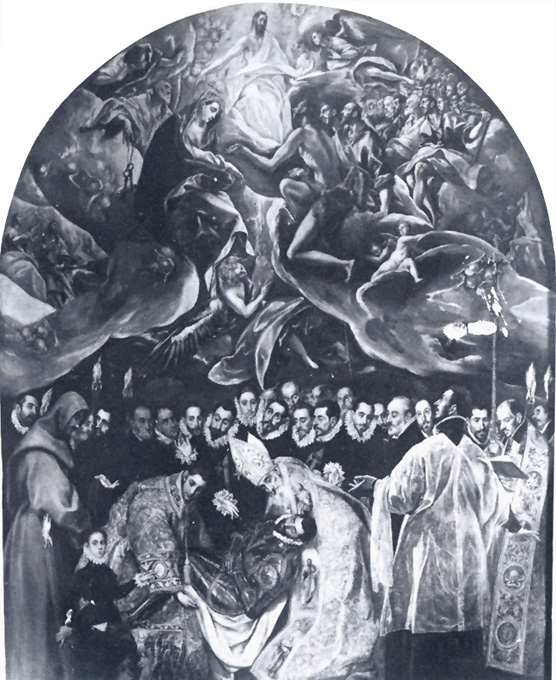
El Greco The Burial of Count Orgaz 1586
Greco Emilio (1913–95). Italian sculptor; he studied at the academy in Palermo coming to the fore only after World War II.
Greenaway Kate (1846–1901). British artist and writer and close friend of Ruskin, famous as an ill. of children’s books, chiefly her own works. Her characters, oddly costumed in early 19th-c. style, started a fashion in children’s clothes.
Greenberg Clement (1909–94). Leading U.S. art critic who was instrumental in bringing to attention Abstract Expressionism, esp. the works of Louis, Newman, Pollock, the Post-painterly abstractionists and the British sculptor Caro. He has published extensively in art magazines and a collection of his essays, Art and Culture (1965).
Greene Balcomb (1904–91). U.S. painter and teacher. He was a geometric abstractionist, e.g. murals for the New York World Fair (1939), until the early 1940s when he began to react against pure abstraction. He turned to semi-abstract studies of landscape and the human figure in which form is made vague and ambiguous by the interpenetration of light.
Greenhill John (c. 1644–76). British portrait painter, pupil of Sir P. Lely. In his late work G. began to break from Lely’s influence and paintings such as Naval Officer have a solidity and reserve which anticipates the next generation of British painters.
Greenough Horatio (1805–52). U.S. Neoclassic sculptor whose working life was spent in Italy. His seated half-nude of Washington as Zeus (1833–43) is the 1st important example of U.S. monumental sculpture. His writings, which expound an early functionalist theory of beauty, include Aesthetics in Washington (1851).
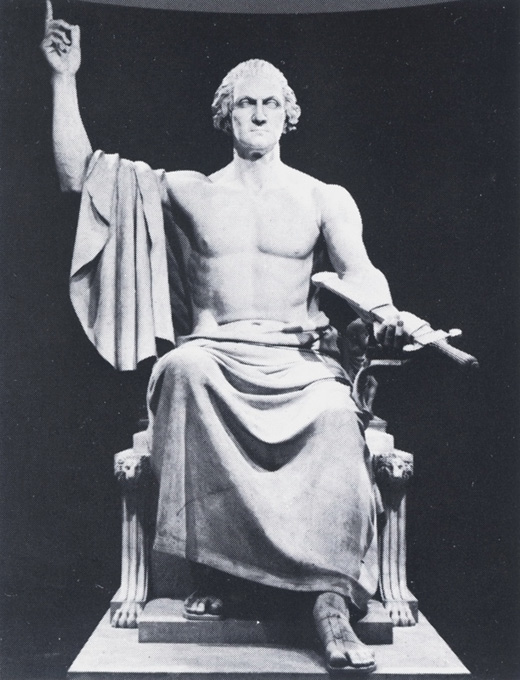
Greenough Washington 1833–43
Greuze Jean-Baptiste (1725–1805). French painter who became famous with the appearance of his Father of the Family Reading the Bible at the Paris Salon in 1755. Praised by Diderot and other moral philosophers, his large-scale genre subjects usually had a moral lesson to tell, as in Return from the Wineshop. They were made famous from Britain to Russia through engravings. However, it is his portraits, particularly of children (Boy with Lesson Book), which are preferred today. His art had declined even before the outbreak of the Revolution, which ruined him.
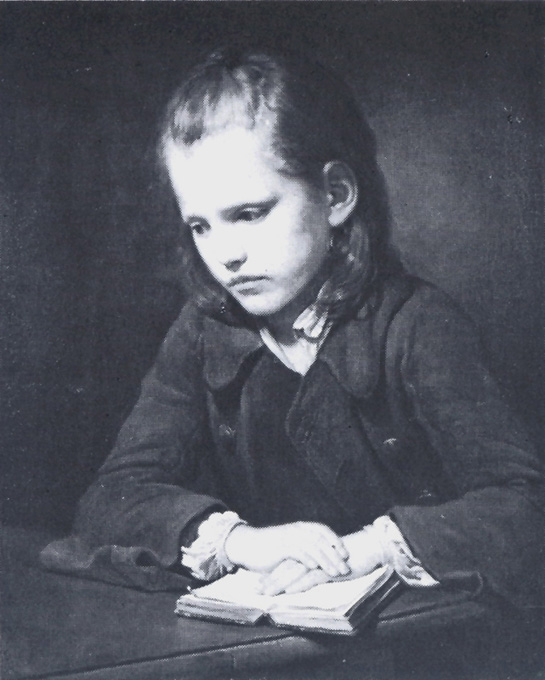
Greuze Boy with Lesson Book c. 1757
Grignion (Grignon) the Elder, Charles (1717–1810). British engraver of French parentage; uncle of C. G. the Younger. He studied under H. Gravelot and in Paris under J.-P. Le Bas. He engraved the plates for various publications including H. Walpole’s Anecdotes of Painting in England and was employed by Hogarth.
Grignion the Younger, Charles (1754–1804). British history and portrait painter, nephew of C. G. the Elder. He studied under G. B. Cipriani and at the R.A. In 1782 he settled in Rome.
Gris Juan (originally José Gonzalez) (1887–1927). Spanish painter, sculptor and draughtsman. G. studied in Madrid, and settled in 1906 in Paris, where he became Picasso’s friend and one of the avant-garde. His development was slow. He earned a living as an ill. but continued to paint, and exhibited from 1912. His work was noticed by the art dealer Kahnweiler, who placed him under contract. G. as a result was able to devote himself entirely to painting and became a leading Cubist, e.g. Portrait of Picasso (1912). He remained faithful to the Cubist aesthetic; his work developed from simplified, precise forms based on the world of objects (e.g. La Place Ravignan, Still Life in Front of an Open Window, 1915) to the monumental compositions of 1916–19, a flat coloured architecture. From this time he experimented with polychrome sculpture, inspired by Lipchitz. His last period expressed his increasing preoccupation with colour, e.g. Guitar with sheet of music (1926). G. regarded himself as a classical painter; for him a painting was a self-contained creation and within its context he used objects to express ideas.
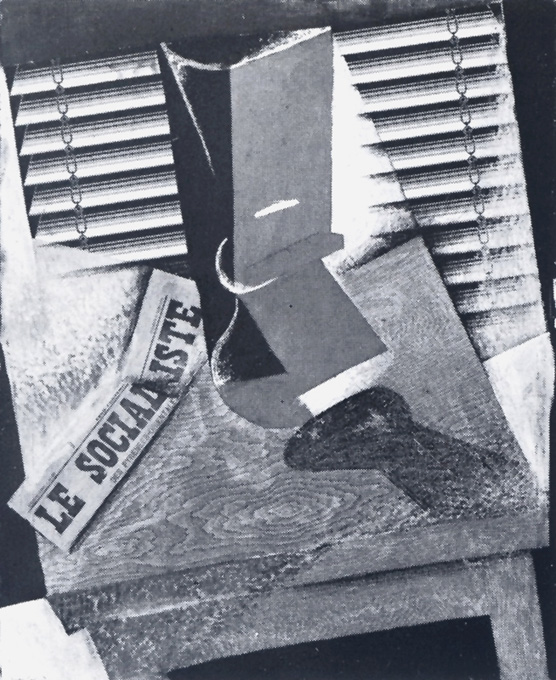
Gris Still-life with Newspaper 1914
grisaille. Monochrome painting in greys sometimes used as an underpainting or to imitate sculptural features as in the paintings of early Netherlandish artists such as D. Bouts or J. van Eyck. Also a type of stained-glass painting of which the most famous example is the ‘Five Sisters’ window in York Minster.
Gromaire Marcel (1892–1971). French painter in a heavy Expressionist style which he developed after World War I. He made his reputation with La Guerre (1925). He produced notable engravings and with Lurçat played an important part in reviving the art of tapestry in France.
Grooms Red (1937– ). U.S. artist and sculptor whose exuberant assemblages, Environments and Happenings are about urban U.S. and particularly N.Y. life. He writes, ‘there is a proletarian feeling about my work. That type of energy and subject matter excite me a lot. And I’ve always felt a kinship to commercial people.’ In 1975–6 he was involved in setting up the Ruckus Construction Company who worked on a project ‘re-creating’ the whole of Manhattan, using different materials, a popular work of kitsch and humour.
Gros Antoine-Jean (1771–1835). French painter whose earlier work exerted a powerful influence on the development of Romanticism in France. His training by J.-L. David and intellectual assent to classicism eventually stifled his temperamental bias towards Romanticism, and after David’s death (1825) he took over the leadership of the outmoded classical school, produced unsatisfactory paintings and committed suicide. Among his important works are Napoleon Visiting the Plague-stricken at Jaffa (1804) and The Battle of Aboukir (1806).
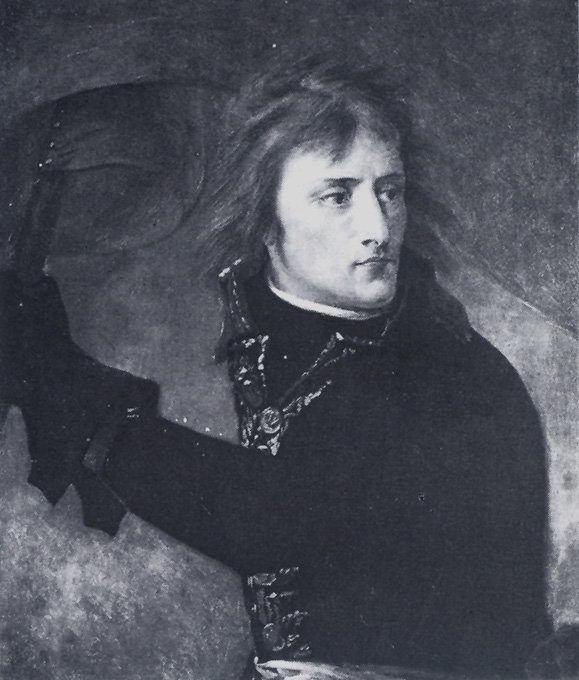
Gros Napoleon at Arcoli (detail) 1796
Grosz George (1893–1959). German Expressionist painter and graphic artist best known for his pen and ink drawings satirizing the German nation during and after World War I; in 1933 he settled in the U.S.A. His own experiences of the war in the German army, as a civilian in Berlin (1916–17) and in a military asylum, made a searing impression. A founding member of the Berlin Dada group, he was also part of the New Objectivity movement. In his work he exposed with merciless and horrifying precision the officials and profiteers who lived off the war and, after it, the vice, the political chaos and the complacency of the bourgeoisie.
grotesque. Originally derived from the mural decoration of excavated classical grottoes. These consisted of panels where fantastic shapes of human beings, animals, etc. were joined together by flowers, garlands and arabesques into a symmetrical design covering the wall or ceiling. Very popular in the 16th c. The term came to be applied to distorted exaggerations, humorous or horrifying, in various art forms, especially sculpture.
ground. Term used in (1) painting, of the foundation surface of white oil paint or gesso laid down on the canvas or panel to receive the painting; (2) music, for a repeated figure played in the bass and serving as a support for variations above it; (3) embroidery, of the basic overall background over which the pattern is worked.
Groupe de Recherche d’Art Visuel (GRAV). A group of artists founded in Paris in 1960. Their approach to art was quasi-scientific, and concerned with the qualities of colour, light and movement. The group owed much to Constructivism, and in its own turn made an important contribution to the development of Kinetic art. The artists associated with it were Garcia-Rossi, Le Parc, Morellet, Sobrino, Stein and Yvaral.
Group of Seven. Group of Canadian landscape painters influential and controversial in the 1920s and 1930s; they stressed design and colour, and aimed to produce decorative but specifically Canadian landscapes. The group was founded in 1919 by Lawren Harris, F. H. Varley, Arthur Lismer, Franz Johnston, A. Y. Jackson, J. E. H. MacDonald and F. Carmichael.
group portrait. Term applied to the painting of a family or other group of real people, as opposed to mythological, historical, religious and other paintings in which a number of people appear. Such portraits were often commissioned and were a great challenge to the artist, who had to give each sitter equal importance while producing a work of art. The genre flourished in 17th-c. Holland; its famous exponents include Rembrandt and Hals.
Gruber Francis (1912–48). French realist painter whose work has affinities with Expressionism.
Grünewald Mathias or Mathis Gothart Nithart called (c. 1475–1528). German painter, born in Würzburg, Bavaria. G. was trained in Alsace in the style of Schongauer, and travelled through Germany, living in Isenheim, Seligenstadt, Aschaffenburg and Mainz, where he was court painter to the Elector. He died in Halle, where he painted a series of pictures in the cathedral for the Elector of Mainz. G.’s masterpiece is the set of 10 paintings for the Isenheim altar (finished c. 1515; now at the Mus. Unterlinden, Colmar). They were intended to be seen in 3 groups which changed as panels were opened and shut: 2 scenes from the life of St Anthony flanking the carved centre-piece (c. 1505, by Backoffen) of St Anthony enthroned with SS Augustine and Jerome; the Annunciation, Concert of Angels, Virgin and Child and Resurrection; and the Crucifixion, St Anthony and St Sebastian (supposedly a self-portrait). Below these was the Pietà which disclosed the carved Christ and Apostles of the predella (also by Backoffen).
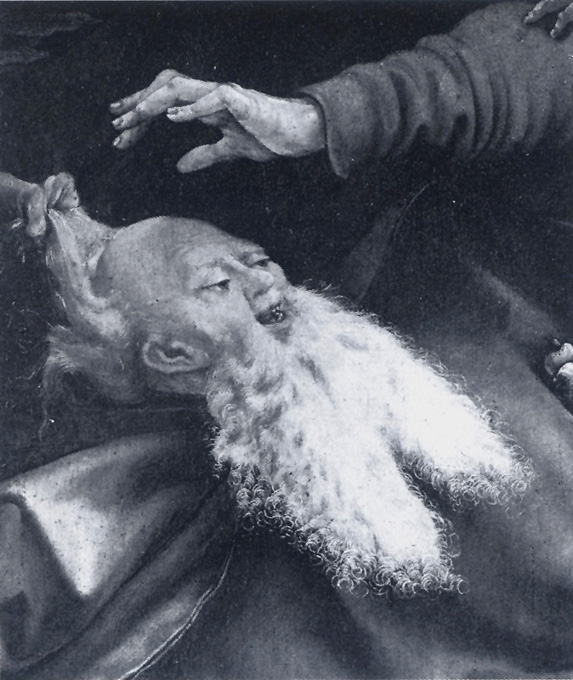
Grünewald Temptation of St Anthony (detail, from the Isenheim altarpiece) c. 1515
The spirit of the Renaissance is remote from G.’s work, but he imbued the medieval German art to which he adhered with an entirely original personal vision expressed in the distorted, tortured forms and strange colouring of the Crucifixions. His range is enormous, encompassing the horrifying Crucifixion and serene Virgin and Child of the Isenheim altar. The Karlsruhe Crucifixion – the greenish, blood-spattered body of Christ, its deformed limbs, ‘where even the nails pinning the claw-like hands, the crown of thorns and the draperies are painted in the same tortured manner – is utterly different from the Madonna who stands in a beautiful garden, fresh and tender. The Mocking of Christ is filled with large figures caught in frenzied movement. Christ, his eyes covered, is gripped by the hair by his assailant, whose fist is poised ready to strike; another, holding Christ’s bonds, is about to lash him with the knotted end of a rope. The figure of Christ in this painting, abused and defiled, directly contrasts with that in the Resurrection, in which Christ ascends suffused with a golden celestial light. G. also painted The Meeting of St Erasmus and St Maurice which formed part of the Halle commission.
Guardi Francesco (1712–93). Venetian landscape painter and draughtsman, brother-in-law of Tiepolo and son of a painter. His son Giacomo (1764–1835) carried on his workshop. G.’s development was slow and his early paintings lacked originality since he was mainly concerned with satisfying the popular demand for small religious and genre paintings. He absorbed the influence of his contemporaries Canaletto and Longhi but evolved a new type of landscape painting, which became very popular. He can be ranked with Constable, Turner and the painters of Barbizon as a pioneer of a new approach to landscape for his subjective use of light and atmosphere expressed with a nervous, calligraphic touch. In his maturity he portrayed Venetian social life brilliantly and accurately. He recorded the excitement of the Ascent in a Balloon and the ceremonial of the Doge embarking on the Bucintoro.
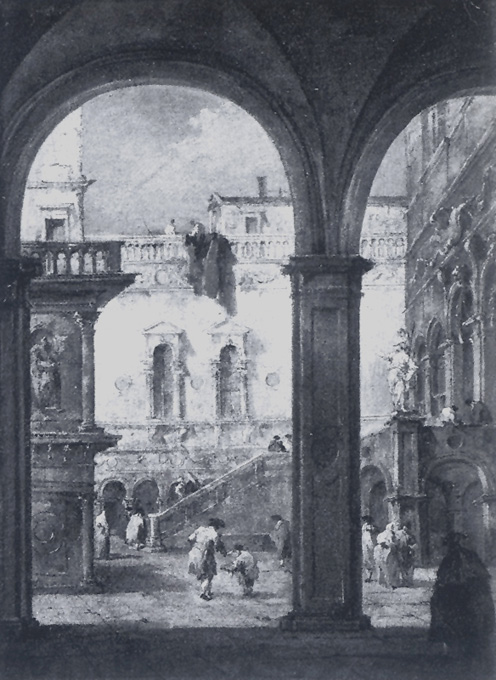
Guardi Courtyard in Venice 1770s
Guercino, Il (‘the squint-eyed’) Giovanni Francesco Barbieri called (1591–1666). Italian painter. He was born at Cento near Ferrara and worked there for much of his life; he also worked in Rome (1621–3) and Bologna (from 1642). The Carracci, Caravaggio and the Venetian school were important influences on his development. Between 1616 and 1621 in a number of notable altarpieces he evolved a colouristic, painterly style which culminated in Aurora. This fine illusionistic painting was the model for many later Baroque ceiling paintings and makes an interesting comparison with Reni’s more restrained treatment of the same subject (1613) in the Palazzo Rospigliosi, Rome. In Burial and Reception into Heaven of St Petronilla, also painted in Rome, G. abandoned the vigorous treatment of Aurora in favour of Annibale Carracci’s type of classicism. The power and originality of his work steadily declined as he became involved in the Counter-Reformation under the influence of which he painted uninspired pietistic altarpieces, many of them in the manner of his rival Reni. On the death of Reni, G. took over his workshop in Bologna. The Royal Library, Windsor, has the best coll. of G.’s very fine drawings.
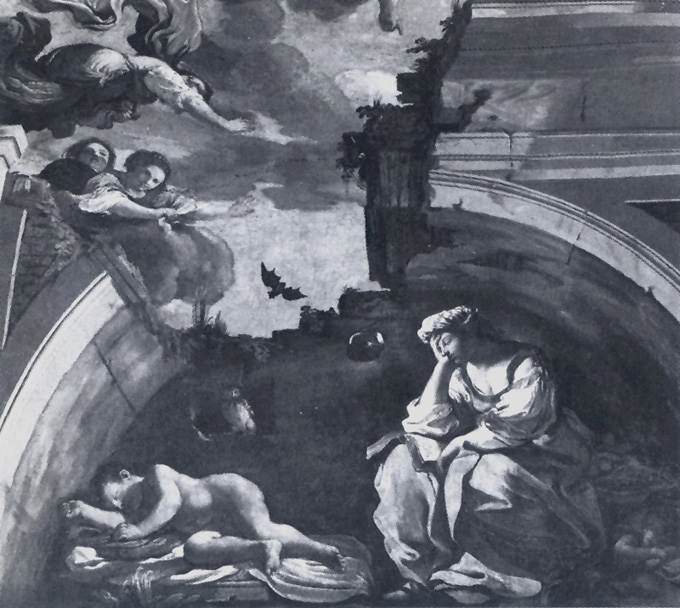
Il Guercino Night
Guérin Pierre-Narcisse (1774–1833). French painter, pupil of J.-N. Regnault. As an exponent of Neoclassicism he alternated between the styles of J.-L. David and Regnault but in either case produced work of extreme banality. Géricault and Delacroix studied under him.
Guido da Siena (13th c.). Italian painter, the founder of the Sienese school. A signed Madonna in Majesty (Palazzo Pubblico, Siena) is dated 1221 but there is controversy among art historians as to whether in fact it does not come from the 1260s or 1270s like other works in a similar style.
Guillaumin Armand (1841–1927). French Impressionist painter. He was a friend of C. Pissarro and Cézanne and exhibited at the 1st (1874), and most subsequent, Impressionist exhibitions. Pale violet and orange predominate in his landscapes.
Günther Franz Ignaz (1725–75). Bavarian sculptor whose painted wood sculptures of religious subjects are among the greatest works of the Rococo period. Best known of these are The Annunciation (1764) and his last surviving work, the Pietà (1774), which has great depth of feeling.
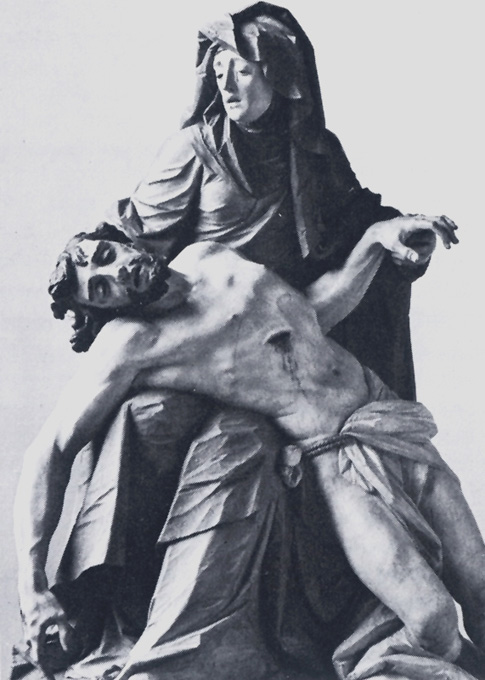
Günther Pietà (detail) 1774
Gupta. N. Indian empire of the 4th–6th cs AD, at its peak under Chandra Gupta II (c. 380–414). Music and Sanskrit literature (Kalidasa) achieved a golden age. G. Buddhist sculpture, e.g. the red sandstone standing Buddha from Mathura, reached a pinnacle of refinement at Sarnath, notably the ‘wet Buddhas’ so-named from their sheer, clinging draperies. The G. balance between stylistic simplicity and decoration, physical refinement and massiveness, influenced subsequent Buddhist art in S.E. Asia. Fine G. Hindu sculptures are at the rock-cut shrine of Uday-agari, Bhopal, and in the reliefs on the Dashavatara temple at Deogarh, both in N. central India. G. Buddhist painting survives in works of remarkable grace and realism at Ajanta.
Guston Philip (1913–80). Born in Canada of Russian-Jewish emigré parents, moved to California 1919. He met Pollock 1927. Initially adhering to the tradition of the Italian Renaissance, he became acquainted with the artists of the Mexican mural movement in 1932 and visited the studios of Orozco and Siqueiros, later becoming involved in mural projects, in association with De Kooning, Gorky and Pollock. In the late 1940s G. turned to lyrical abstract painting and his disciples dubbed his work ‘Abstract Impressionism’. In the 1970s he returned to figurative paintings of cartoon-like simplicity of line and socially conscious subject matter. These works, usually on a large scale, were of great importance to the younger generation of neo-figurative artists.
Guttuso Renato (1912–87). Italian Social Realist painter. Co-founder of ‘Fronte Nuovo delle Arte’, also member of the Communist party. The vigour of his style and imagination transcended his polemical approach to subject matter.
Guys Constantin (1802–92). French draughtsman and ill. famous for his vivacious sketches of British and French society – manners and changing fashions, carriages and military occasions, courtesans and dandies. This ‘modernity’ was commended by Baudelaire in his appreciation of G.’s work, Peintre de la vie moderne (Le Figaro, 1863; The Painter of Victorian Life, 1930). G. was reporter-illustrator for The Illustrated London News during the Crimean War.